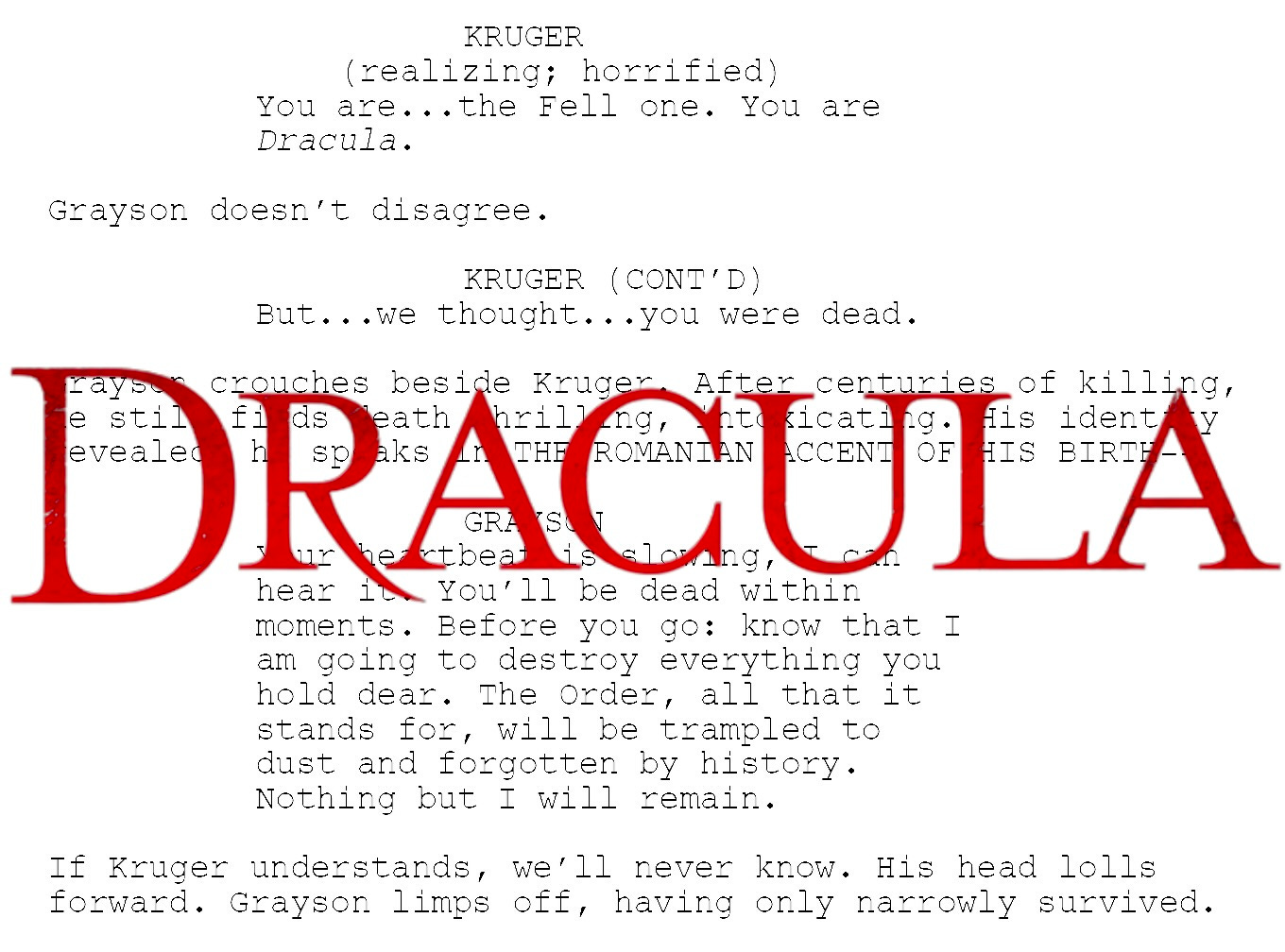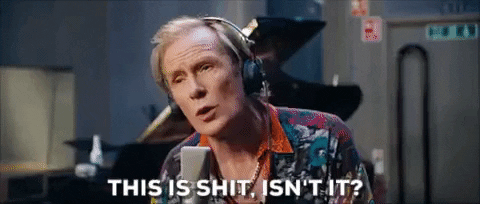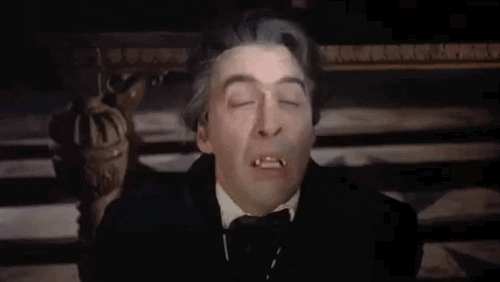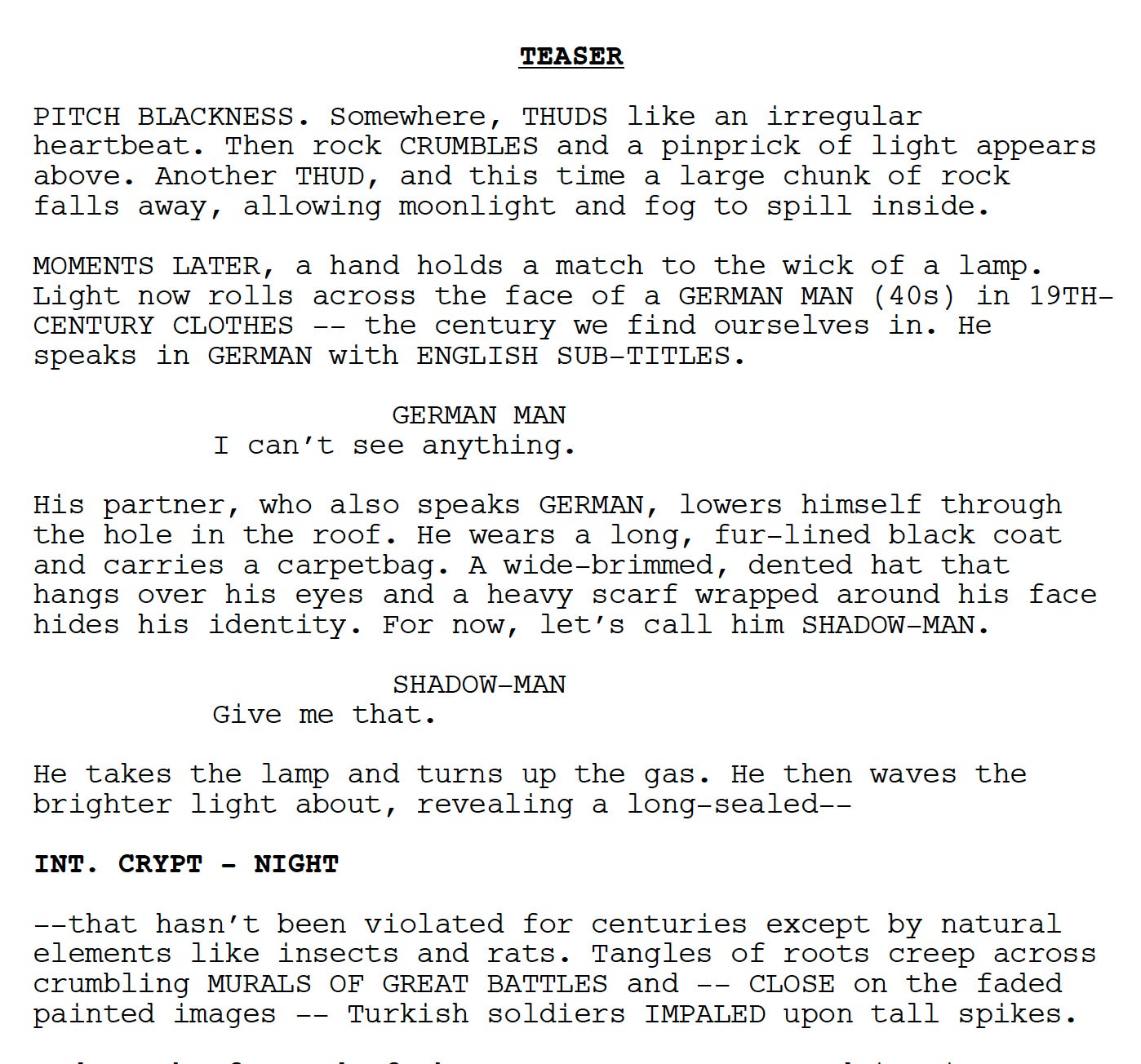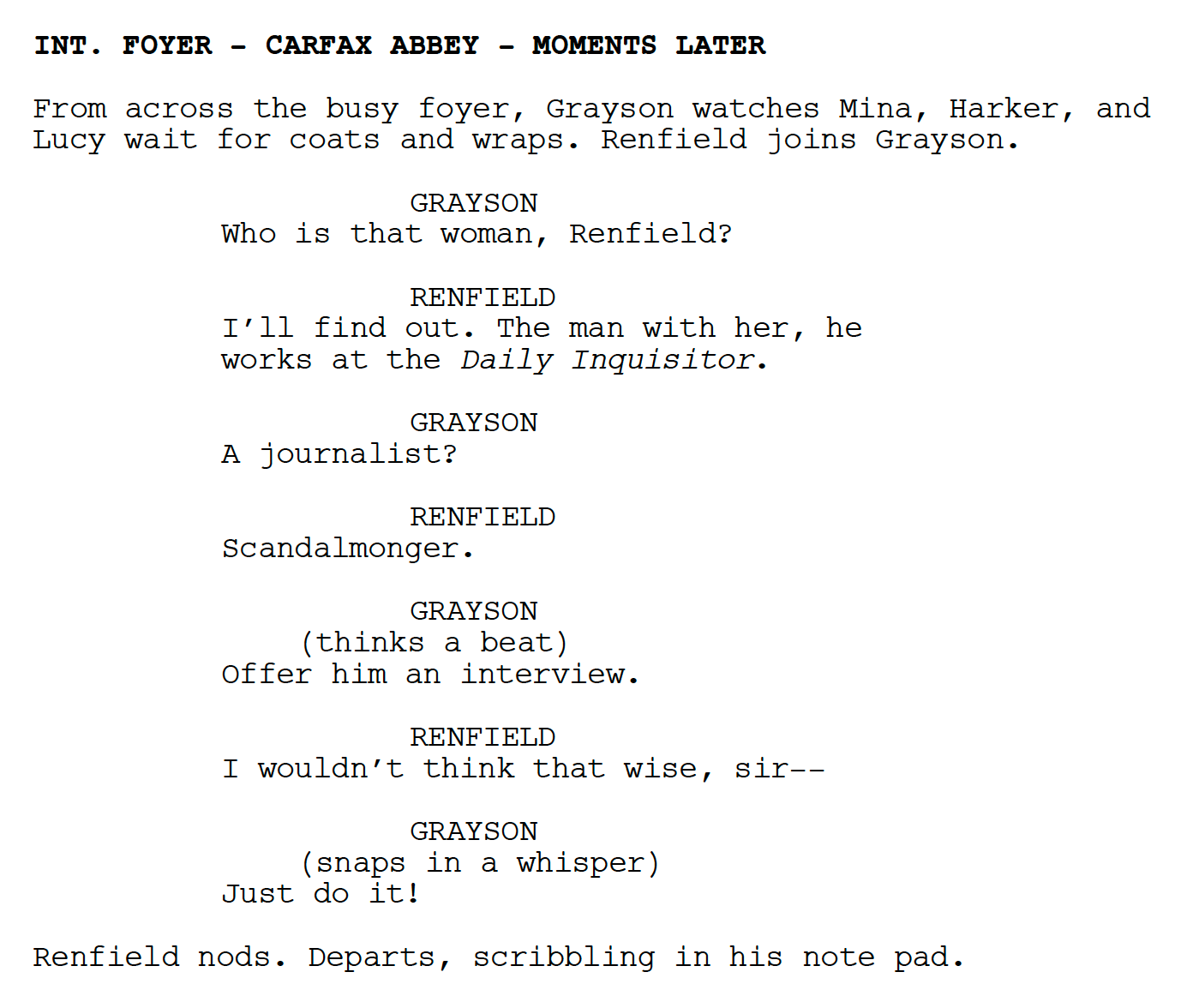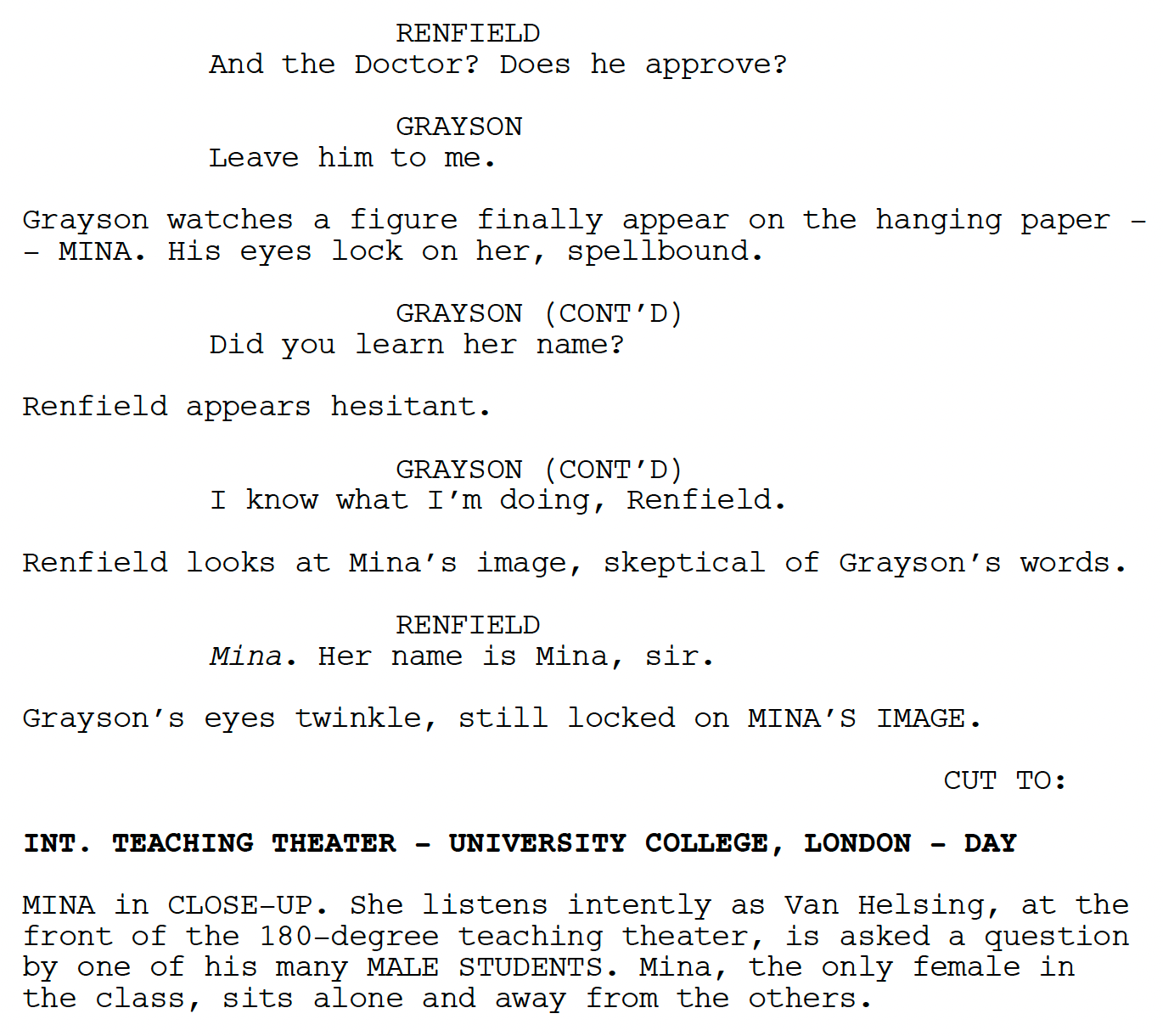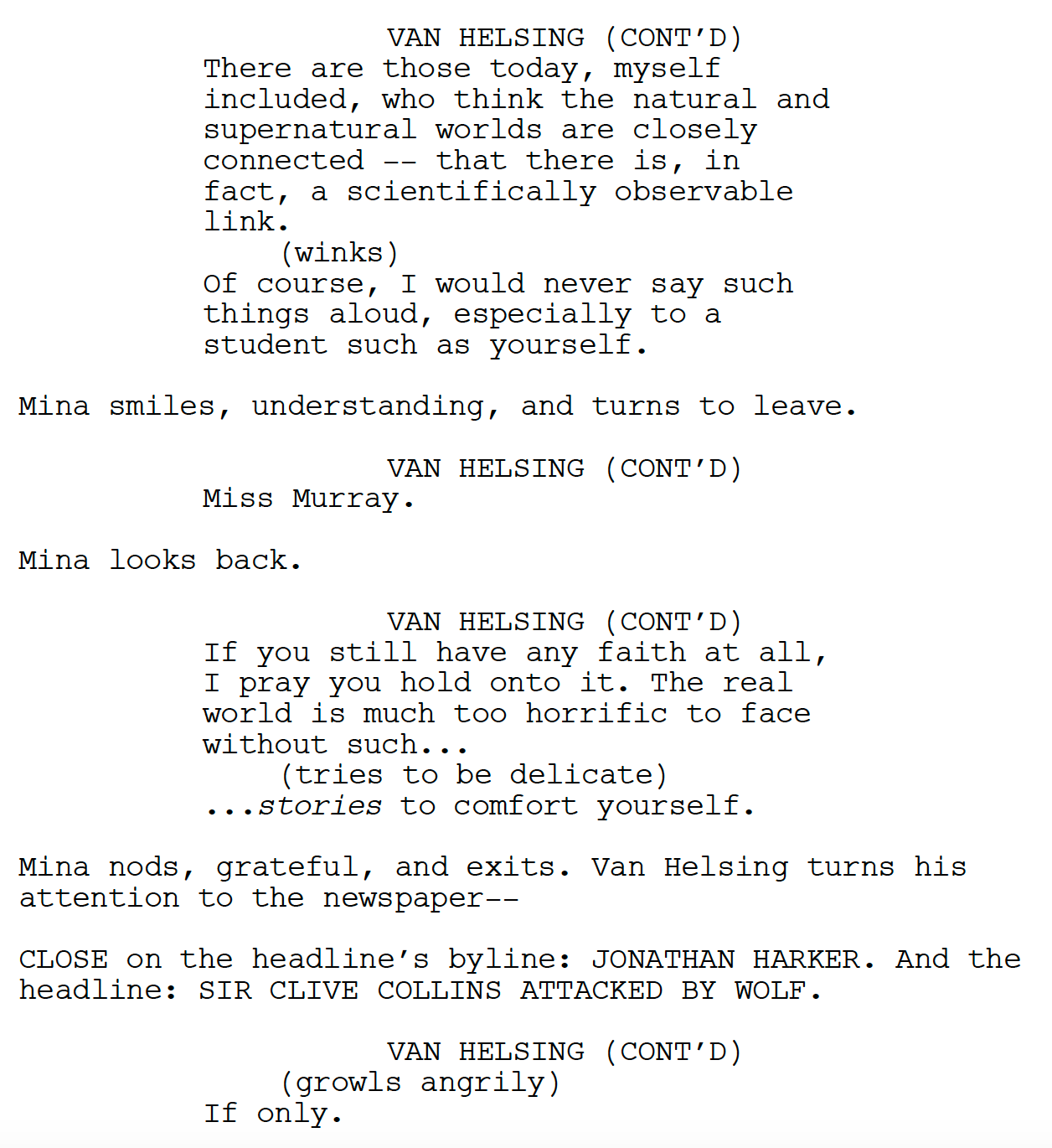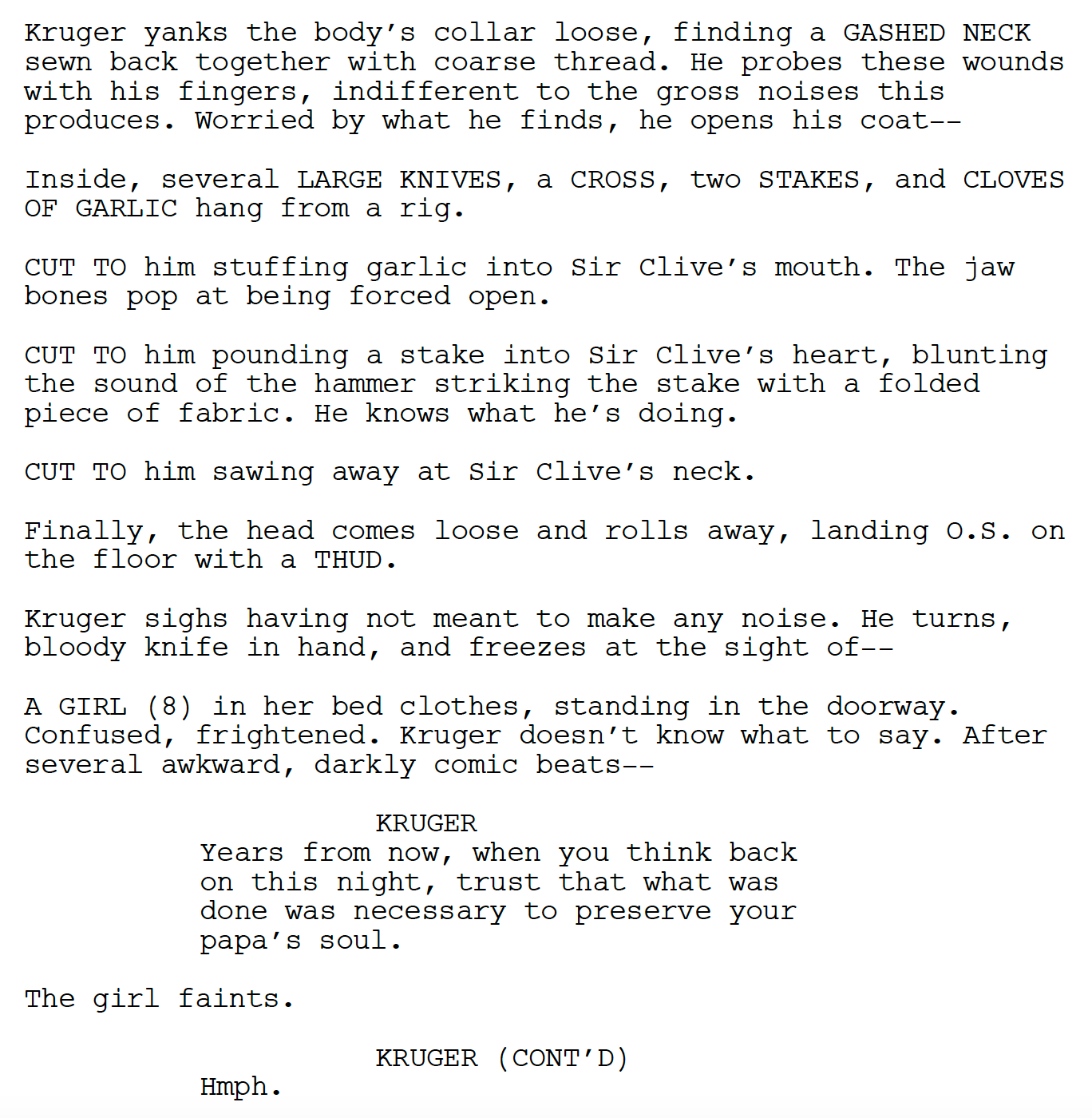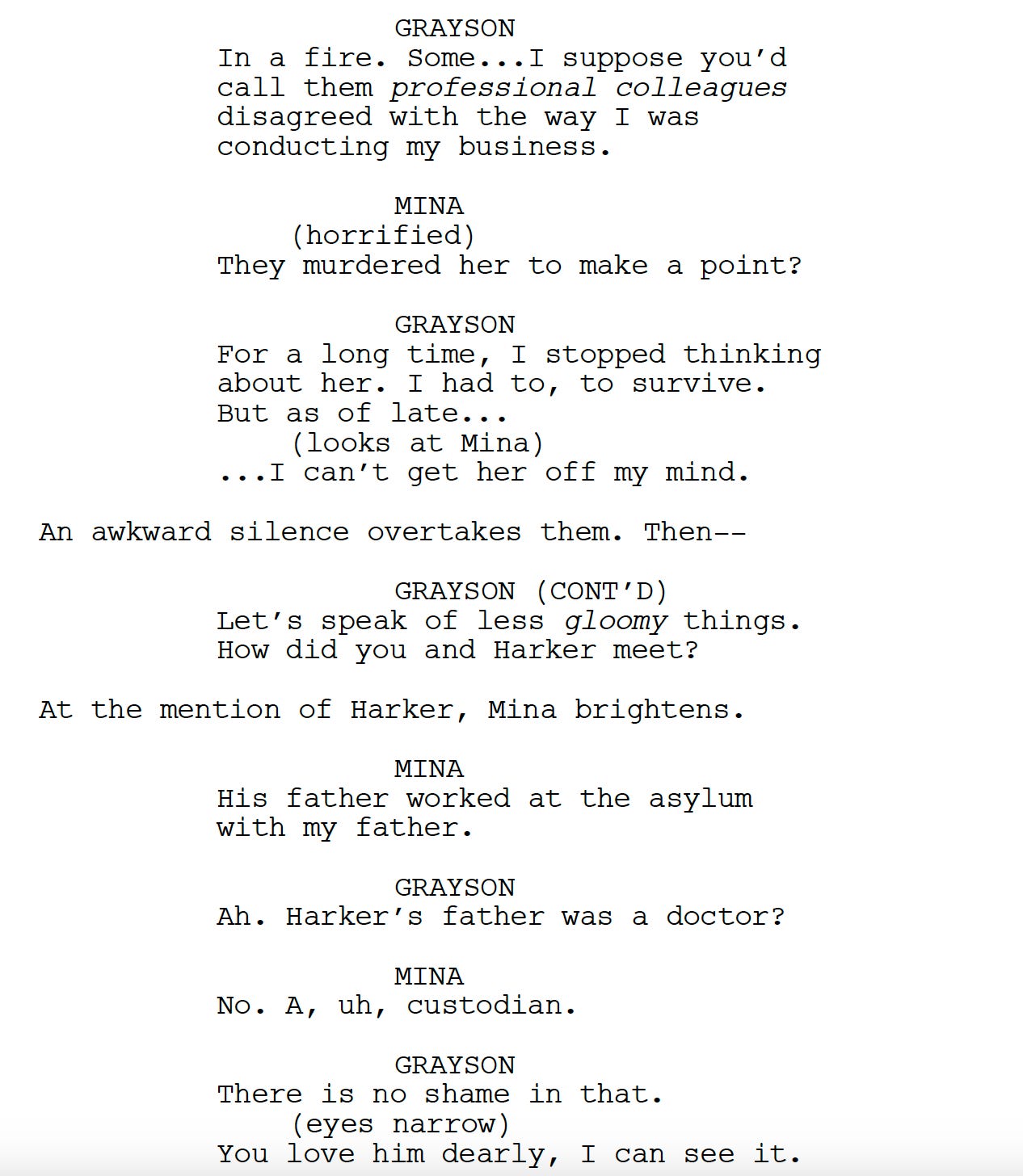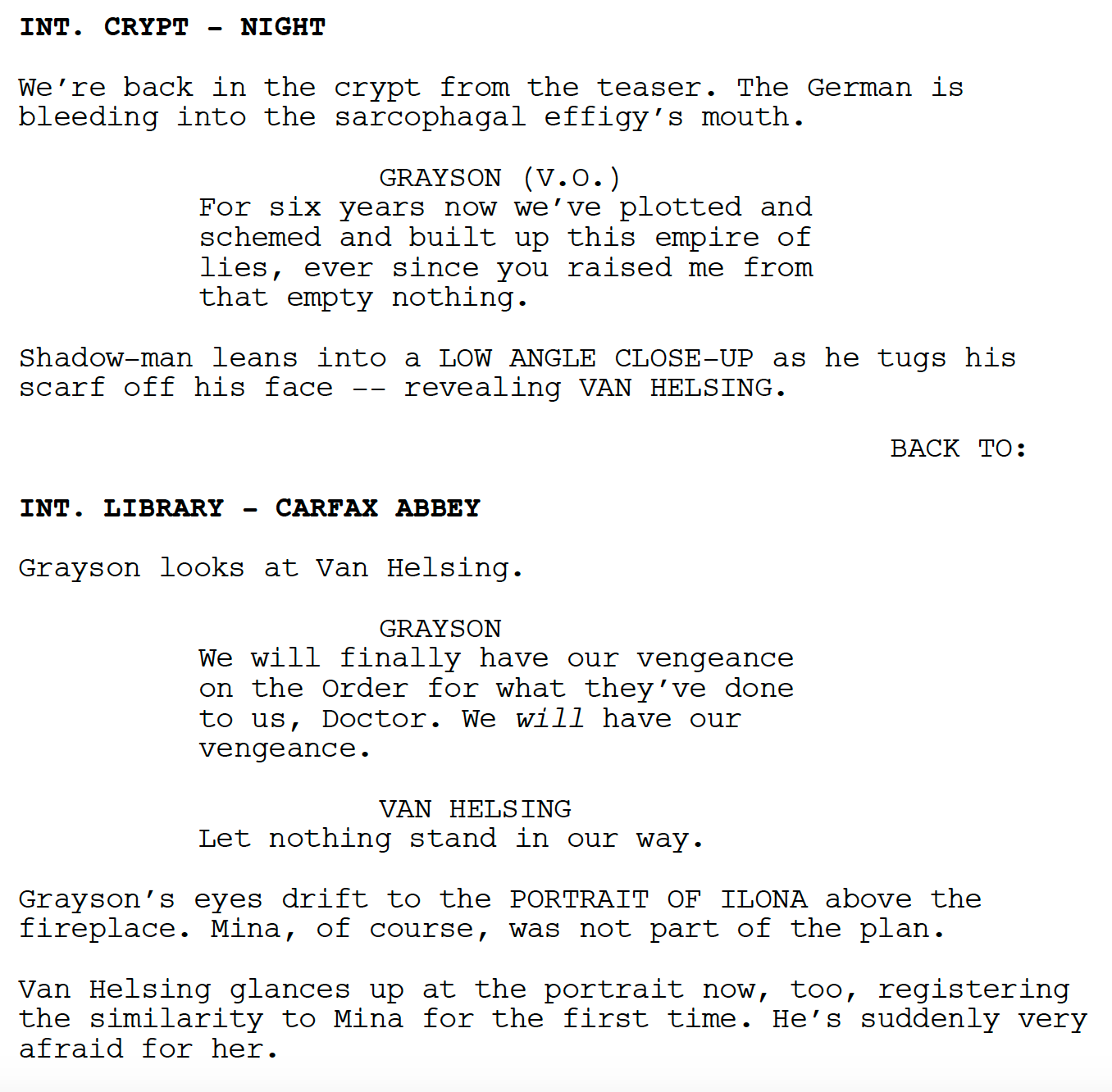Every Screenwriter Dreams of Creating a TV Series...But What Happens When You Can't Bear to Watch the End Result?
Let's break down what happened to my 'Dracula' pilot script after it earned a rare series order - because its journey from my laptop to screens is a Master Class in how not to make good TV
This article is part of 5AM StoryTalk’s celebration of the complete and utter shitshow that was 'DRACULA' (2013) on its 10th anniversary. The TV series, which I created for NBC and Sky, remains the most painful creative experience of my career because of elements within the production. You can read more about its development and greenlight in ‘The Horror of 'DRACULA': The Unbelievable True Story of the 2013 TV Series’.
Somewhere over the Indian Ocean, on a return flight from London, I rewatched the pilot episode of my TV series “DRACULA” (2013) for the first time in half a decade. This was about two weeks ago now, and I only did so because this month is the tenth anniversary of the series’ debut on NBC in the U.S. and Sky in the U.K. and elsewhere around the globe. The experience was somehow even more unsettling and disappointing than the last three times I’ve made myself watch it. I’m going to explain why, and in doing so provide — I hope — some perspective about what goes into good TV storytelling and…well…what the opposite looks like.
Before I dive in, I want to acknowledge that “DRACULA” continues to have many fans. I very much appreciate the support these viewers have provided over the years and the joy they’ve taken from a TV series that I originated. But two things can be true - such as, you can love and a thing while it also should’ve been a much better series given the hard work so many in the writers’ room put into it.
Unfortunately, for all the passion these fans have brought to the experience, the series’ flaws — which are so very, very numerous — left most critics only indifferent to curious when “DRACULA” launched and, as it progressed, as the shambolic, I’d even say incompetent nature of its storytelling revealed itself as foundational rather than scattered missteps that might’ve otherwise been corrected over time, these same critics became mocking, antagonistic, and dismissive. It was ultimately canceled. I can’t argue with the decision because I’ve never even watched the whole thing, and I created it.
Here's what we’re going to do now. Because I believe there’s much for you to learn from what happened to the pilot script I wrote from the point I delivered it to NBC and Sky and they greenlit, I’m going to contrast my pilot script with what aired on October 25th, 2013 - a version of the script that was rewritten by the head writer.
Because I’m not sure if I can legally share the entire pilot script here — nor would it make sense to expect you to read it to gain something from this article — I’m going to instead break down its scenes and share, where appropriate, snippets of the script.
Then, I’m going to break down the pilot episode. You can watch it here on Apple in the U.S.; outside the U.S., you can find it with an easy Google search. If you do, I appreciate the 1/10,000th of a dollar I’ll make from your time, since streaming paid almost nothing in residuals when I signed my contract way back when. But presuming you skip watching it, I’ll explain what was changed, show why these decisions are so narratively confusing, and, in conclusion, hopefully reveal to you how you can look at your own work and identify when you’re making similarly lazy, incoherent story decisions that fail to convey things like mystery to engage your audience, outright talk down to that audience, and even make the cardinal sin of failing to move your story forward in any way.
“DRACULA”: The Blood Is the Life
As originally written by Cole Haddon (that’s me)
I’m going to avoid flourishes in my breakdown of my pilot. What I want you to understand is the basic story and why things narratively happened. Where appropriate, I’ll include additional details so that we can contrast how they were realized on-screen later.
AN UNDERGROUND CRYPT. Two figures, one of them with his face obscured. After years of searching, they’ve found a hidden crypt that contains a sarcophagus crowned with an effigy of a screaming vampire. The masked man stabs the other man, who is, we learn, his brother. “Did you think I did not know what you did?” Ah, a mystery. The brother destroyed the masked man’s life in some way. The brother’s blood is then spilled into the vampire effigy’s open mouth, running into the sarcophagus and into the mouth of a withered vampire husk. The husk begins to come back to something like life, twisted face lunging at the camera before fully restored.
A PARTY INSIDE CARFAX MANOR. This is an immense home in London, an old home – but painted in the cultural colors of Turkey and decorated in similar historical trappings. (While this might seem an odd choice, Vlad Tepes, the real Dracula, grew up in a Turkish palace as a prisoner of luxury and I wanted my Dracula to find comfort in similar environs rather than a musty old castle). Right now, the wealthiest people in London are present, waiting to be greeted by the mysterious ALLAN GRAYSON, an American industrialist who is seen as some sort of nouveau riche interloper. Amongst the guests is MINA MURRAY and her boyfriend JONATHAN HARKER (who is a muckraking journalist) and Mina’s best friend, the flirty and stylish socialite LUCY WESTENRA. Then, Grayson sweeps down the stairs, entering like a rock star, much hotter than we last saw him in his crypt. As he starts to speak, he’s caught off-guard by the sight of Mina, as if he might know her. She feels something, too. Then, he recovers and explains that he has brought WIRELESS ELECTRICITY to London, painting himself as the heir of Edison and Tesla. He demonstrates this by handing out lightbulbs that then are illuminated by a mysterious source. After this demonstration, Grayson meets the sexy and intellectually stimulating LADY JAYNE WETHERBY, expresses interest in patents necessary to his work that are owned by a corporation several guests sit on the board of, and asks his majordomo RENFIELD to invite Harker to a private interview.
Important: Grayson invites Harker to this interview to find out more about Mina WHOM HE NEVER MEETS IN THIS SCENE. He has a mystery he needs to solve. Again with mystery. Questions that intrigue our characters and the audience.
Fun fact for cinephiles: I named Allan Grayson as an homage to Allan Gray in VAMPYR (1932).
ACT 1 ends with Sir Clive, one of the men who sits on the board that controls the patents Grayson is after, being viciously attacked by a wolf after others see bats flying through the sky. Clive insulted Grayson at the party, bringing this on himself.
In the aftermath of the murder, Harker bribes a cop into letting him see the crime scene. There’s dark humor throughout this scene. A cop finds a missing arm and holds it up, causing a woman to faint. Such humor is part of my script, but, as you’ll find, not the actual pilot episode that was shot.
BACK AT CARFAX MANOR. Grayson and Renfield disagree about Grayson’s decision to kill Sir Clive. Renfield wonders what “the doctor” will think. Grayson explains these wealthy men are only beginning to realize what’s coming their way; his technology will destroy their investments in petroleum, and it’s panicking them. Don’t worry, he has control of the situation.
Note: This is about characters reacting to decisions, some impulsive, rather than exposition. This point will make more sense when I break down the produced pilot. It also sets up another mystery, another question: who is this doctor? Even though the next scene does not reveal an answer to this question, the prompt does lead us to “the doctor” himself even if the audience doesn’t understand that until the episode’s conclusion or a rewatching.
A TEACHING THEATER. Mina, we find, is a medical student. We already knew, from the party, she was fascinated by science. Here, she’s lectured to by DR. ABRAHAM VAN HELSING. When other men in the class — including one named Bruce Campbell (after the actor who grew up near where I grew up) — try to talk over Mina, she gracefully makes them look like fools and impresses Van Helsing by doing so. She is, we realize, his intellectual equal even if she lacks his expertise at this point in her life.
CARFAX MANOR. Grayson meets with Harker, who interviews him. Grayson is very much the showman still and plays on Harker’s insecurities about his station in life. Harker can’t help but like Grayson because he feels “seen” and appreciated by him. Harker is, at his core, just a sad white dude who thinks he should be far more successful than he is - making him easy to manipulate.
BACK WITH MINA AND VAN HELSING. After class, Mina follows up on the discussion about the natural versus supernatural worlds discussed in the teaching theater. She reveals Harker thinks she should pay more attention to the Bible than science (setting up a future ideological difference between them and Harker’s own conservative mindset). Van Helsing encourages her to maybe take Harker seriously, because the horrors of the real world are too great to face without spiritual delusions.
AN AUTOMOBILE. Grayson takes Harker on a drive, during which they talk about how Harker is envious of how Grayson was able to rise above the poverty he was born into (a very American ability in his mind) and then discuss Mina at length. Grayson invites Harker and his Mina to Ascot for the horse races.
CARFAX MANOR. Grayson stands in his library, and looks up at the painting of ILONA – his dead wife – over the fireplace. Ilona looks just like Mina. Again, he hasn’t met her yet. We’re slowly building up to that and weaving a mystery about why Mina is going to become so important to him and our story.
SIR CLIVE’S HOUSE. A vampire hunter named Kruger — an imposing type — breaks in to examine Sir Clive’s corpse in the coffin displayed in the parlor. He cuts off the corpse’s head, then turns to find Clive’s stunned little daughter there. He tells her, “Years from now, when you think back on this night, trust that what was done was necessary to preserve your papa’s soul.” He then walks out on that dark little bit of comedy, ending Act 2.
ASCOT RACES. Grayson finally meets Mina, which unsettles and mesmerizes her. The connection is very deep. Grayson then dominates his way into getting Harker to let Mina go for a stroll to the paddock with him. They discuss Grayson’s wife who died in a fire, murdered by “professional colleagues he’d had disagreements with”, and was ultimately buried under a blanket of her favorite flowers – EDELWEISS. The conversation turns to Harker and Mina’s future with him. Without realizing it, Mina admits something is missing from the relationship.
CHAPTERHOUSE. The unidentified underground headquarters of London’s chapter of THE ORDER OF THE DRAGON, a secret society of religious extremists turned craven capitalists (basically, the GOP). Kruger reveals Clive’s decapitated head, which had to be removed in case he had been turned and would return as a vampire.
Fun fact: The Order of the Dragon was a real chivalric order that Vlad Tepes and his pappy belonged to. Father Tepes was known as Dracul - the Dragon. Dracula means Son of the Dragon.
BACK AT THE ASCOT RACES. Grayson runs into Lady Jayne. The flirtation is really intellectual sparring. They flirt in code like Golden Age Hollywood actors, but hornier. ACT 3 ends with Lady Jayne introducing Grayson to QUEEN VICTORIA.
ACT 4 begins with Grayson being very gauche to the Queen; he uses his American directness to cover for his behavior. It’s just his manner, and, upon inviting her to Carfax Manor, even suggests he’ll let her sit at the head of the table. After Grayson leaves, the Queen warns Jayne to be careful with that one because he’ll be the end of her. We then see Grayson and Jayne in her carriage, having sex.
OUTSIDE CARFAX ASYLUM. Harker drops Mina off at the asylum, as Mina lives there with her father who administers the asylum. Harker behaves a bit jealous of Grayson, but Mina insists there’s nothing to worry about there. Harker is her love.
GENTLEMAN’S CLUB SAUNA. Grayson ambushes the wealthy men who own the patents he’s after, taunting them in his American way. He’s got Sir Clive’s widow to sell him his shares in the corporation that controls the patents. He’ll get the others to give him theirs too, if necessary, to get the patents. More, he outright antagonizes them by saying aloud what his wireless electricity means to their investments in fossil fuels.
BACKYARD (or garden, in England). A black wolf watches some of the other wealthy men, spying on them as they kiss. The wolf is shot in the leg with a crossbow bolt by Kruger. Kruger gives chase, and we see a naked man now fleeing the scene (skipping a transformation scene as I wanted to use as many classic monster cinema tricks as possible, meaning as few special effects as possible).
ROOFTOPS. Grayson, naked after his transformation, fights Kruger. As an axe flies through the air at the injured Grayson’s face, we cut to commercial.
Upon our return, ACT 5 starts with Grayson and Kruger’s fight. Grayson seems outmatched for a moment, especially having been injured by holy water-tipped crossbow bolts. But Grayson waits for his moment, and plunges his fangs into Kruger’s neck. As Kruger dies, he sees a familiar tattoo on Grayson’s back and realizes Grayson is formerly of the Order of the Dragon. This leads to the revelation that Grayson is “the Fell One…Dracula.” To be clear, this is the first time the name is even mentioned. The Order thought he was dead. DRACULA, Grayson’s real identity, tells him that Kruger should go to his death knowing the Order and all that it has stood for will be destroyed.
Note: Kruger’s death is meant to shock. The hope was to stunt-cast a name in this part, so you wouldn’t expect him to die. (In fact, I wrote the part for my friend Thomas Jane.) The reason for this is that a space would be opened up in the story, another mystery/question formed: who will serve as Dracula’s adversary if not this big, imposing man?
MINA’S BEDROOM. Mina reads a book on resurrecting the dead she stole from Van Helsing’s office, clearly not interested in heeding his advice. Harker throws pebbles at her window, and when she answers, he tells her that Grayson unsettled him. Grayson is everything he wants to be, has everything he wants to have…with one exception. Mina. He’ll work to give her what she deserves if she agrees to marry him. She does.
CHAPTERHOUSE. Kruger’s head, delivered as Sir Clive’s was. Here, we get a big reveal: Lady Jayne, Grayson’s lover, is, in fact, a vampire hunter and belongs to the Order of the Dragon. Another secret identity revealed. She’s tasked with hunting down this vampire that is stalking London.
Note: Go back and reread this outline. For the most part, every scene escalates the stakes in some way even if you don’t realize it at the time. A scene with Grayson and Lady Jayne flirting and screwing might seem frivolous at first, but now it doesn’t. Escalating…stakes…compelling audiences to engage in a mystery unfolding before them.
Fun fact: Lady Jayne began as an homage to Hammer Films’ CAPTAIN KRONOS - VAMPIRE HUNTER.
CARFAX MANOR. Grayson returns and studies a hidden “murder board” of Order of the Dragon members identified and unidentified. Someone enters behind him, we sense to attack. Then, the reveal: It’s Dr. Van Helsing. The two are allies. They argue about the murder of Sir Clive and Grayson’s impetuous strategy, but do not become violent. It puts their plan at risk, a plan built on mutual vengeance. Grayson says, “For six years now we’ve plotted and schemed and built up this empire of lies, ever since you raised me from that empty nothing.” Because Van Helsing was the masked man in the opening scene.
Note: Van Helsing sees the painting of Ilona here, which silently concerns him given his relationship with Mina. Another mystery/question: how will Van Helsing react when his favorite pupil is endangered by his vengeance-ally.
MINA’S BEDROOM. She lies asleep, a photo of Harker beside her on the nightstand as well as a vase of Edelweiss flowers (Ilona’s favorite, remember). The battle for Mina’s heart has begun. OUT.
Okay, so that’s my episode. I reread it to present this breakdown to you. It was my first time reading a decade, in fact. I’d been told in the interim that NBC regularly shared it with newer writers as what they identified as an “NBC script” — flattering, yes — and it makes sense upon rereading it. I’m not bragging because there are several factors for why it turned out so strong. I was guided by an excellent studio exec (identified as the Fixer in my “Horror of ‘Dracula’” article), but more importantly by Mr. English who worked tirelessly with me to perfect every scene. On top of that, my wife Lindsay Devlin, a produced screenwriter in her own right, offered guidance along the way. The result is really damn strong, which I can’t say about every pilot I’ve written. Sometimes magic happens, that’s all I can say.
My observations about it today are largely limited to dialogue. On a handful of occasions, my characters speak too directly to the audience, giving that audience what it needs to understand what’s happening. On others, my English characters aren’t as fine-tuned as my English characters are today after having lived in the U.K. for more than four years. Ironically, upon rewatching the pilot, I noted several scenes punctuated by incredibly obvious dialogue. In a script that the head writer mangled, he nevertheless managed to hold onto the worst aspects of my work. In other words, what I now criticize, he found valuable enough to protect.
Now, let’s discuss the pilot that was shot. I’m going to break it down, contrasting it with my draft as we go along.
“DRACULA”: The Blood Is the Life
As rewritten by a head writer whose name you can look up if you care to and produced on a set that the series’ creator — along with the head writer — were barred from visiting.




